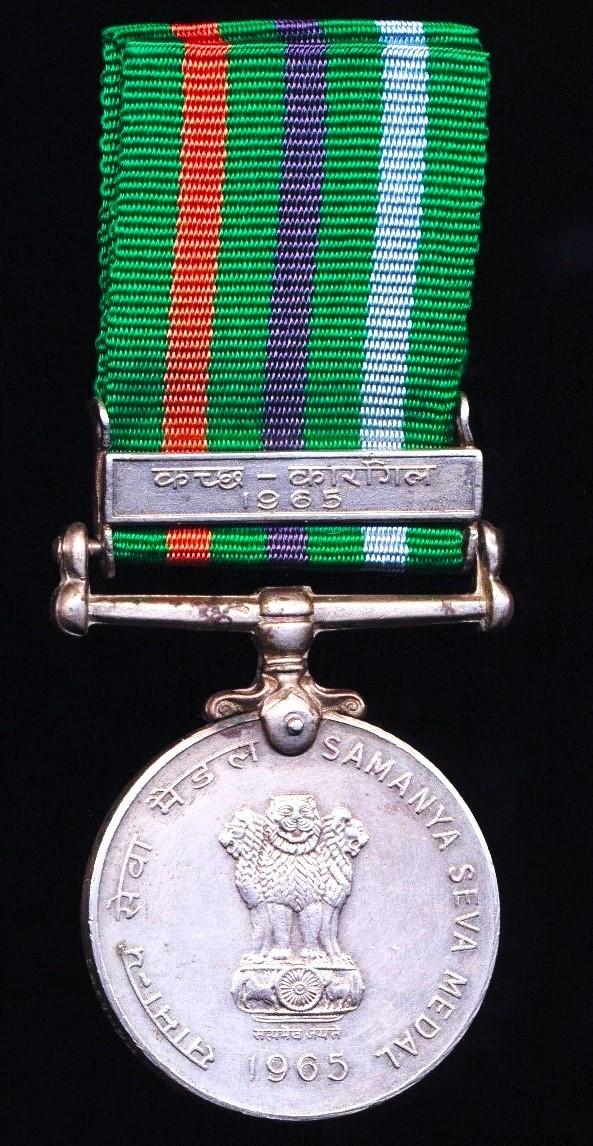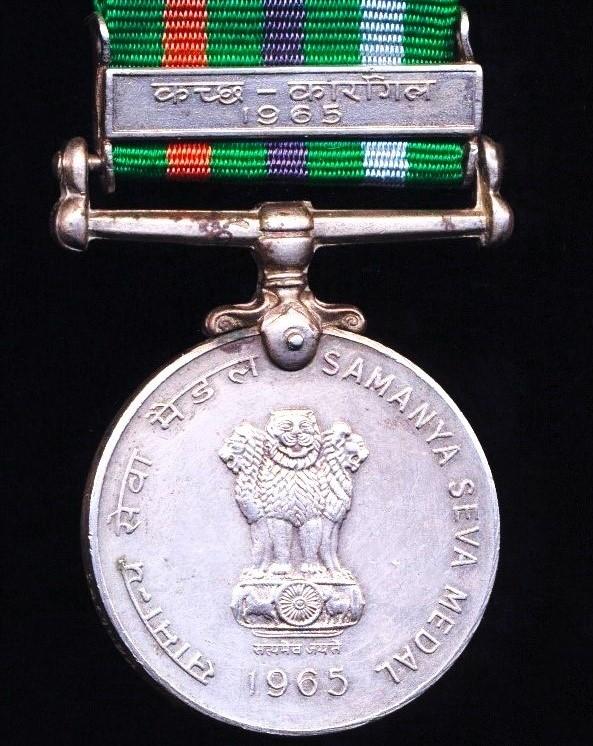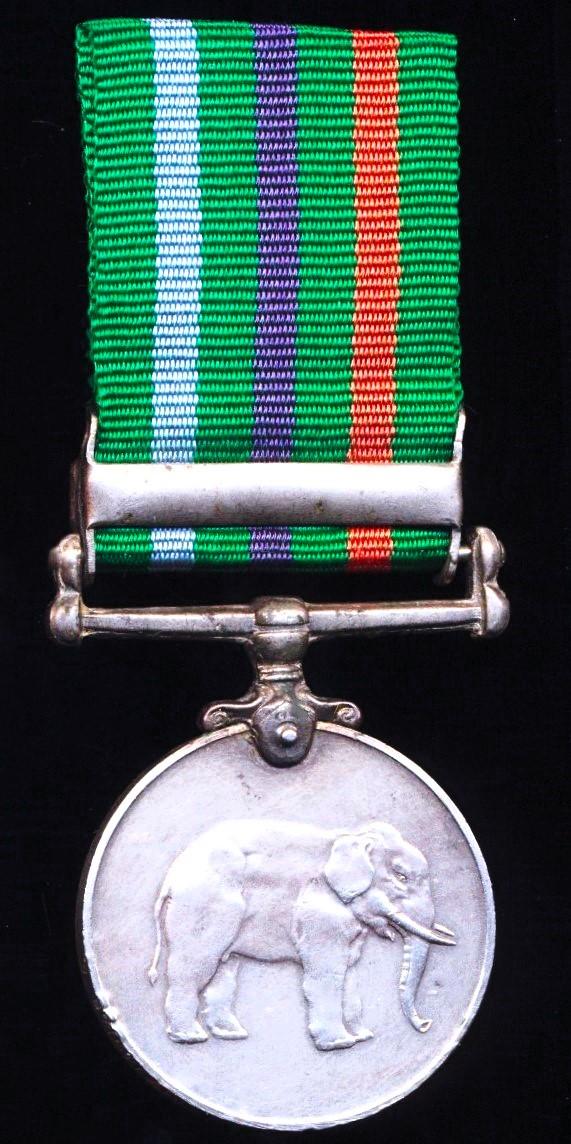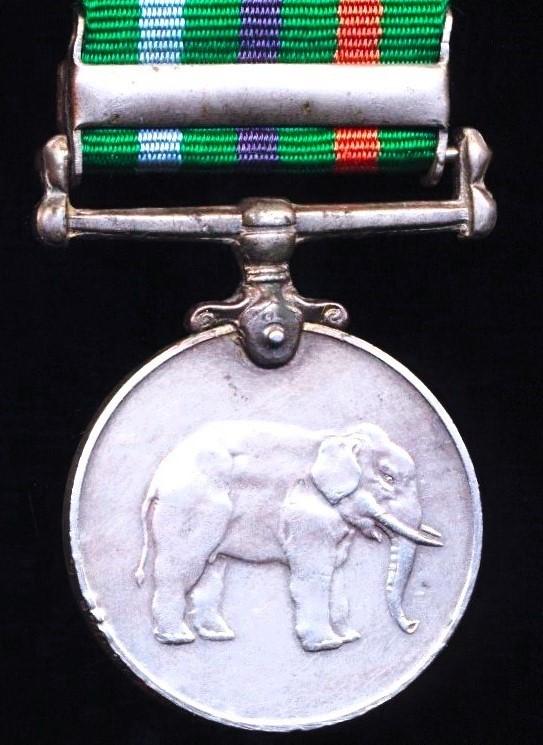India: Samanya Seva Medal 1985. With bi-lingual Hindi and English language clasp 'Kutch-Kargil 1965' (2451824 Sep. Surjit Singh. Punjab R.)
The recipient was an Indian soldier of the Sikh faith holding the rank of 'Sepoy' (Private) while serving with the Punjab Regiment, and infantry regiment of the Indian Army
The clasp 'Kutch-Kargil 1965' was the very first clasp to be instituted - retroactively - for the Samanya Seva Medal, and was created on 8 May 1975
The clasp was awarded for service in one of two diverse campaigns, i.e. either for the operations in the Rann of Kutch, for services in the High Himalaya in Kargil, between April 1965 - January 1966. Qualifying criteria for service in Kargil was 1 x days service in battle, or 90 days of service in theatre between 17 May 1965 to 25 January 1966
The Punjab Regiment is the second oldest regiment still in service in the Indian Army, and is the most senior regional infantry regiment. It was formed from the 2nd Punjab Regiment of the British Indian Army in 1947. The original battalions of the regiment that were transferred to India after 1947 were composed primarily of Sikh and Dogra soldiers who belonged to the districts of Punjab that were given to Pakistan. However the second and third generations for the regiment were recruited both among this refugee community but recruitment was opened up to all castes and communities of Punjab, Haryana, Jammu and Himachal Pradesh in the late 1960s. The regiment currently consists of Dogras and Sikhs primarily drawn from north Indian regions of Jammu, Himachal Pradesh and Punjab. However, as an exception, two regular battalions (19 and 27 Punjab) have troops from other Indian castes as well. The Regimental Centre of the regiment is located at Ramgarh Cantonment, Jharkhand
An extremely scarce seen Indian campaign medal
Condition: VF
Code: 23873







